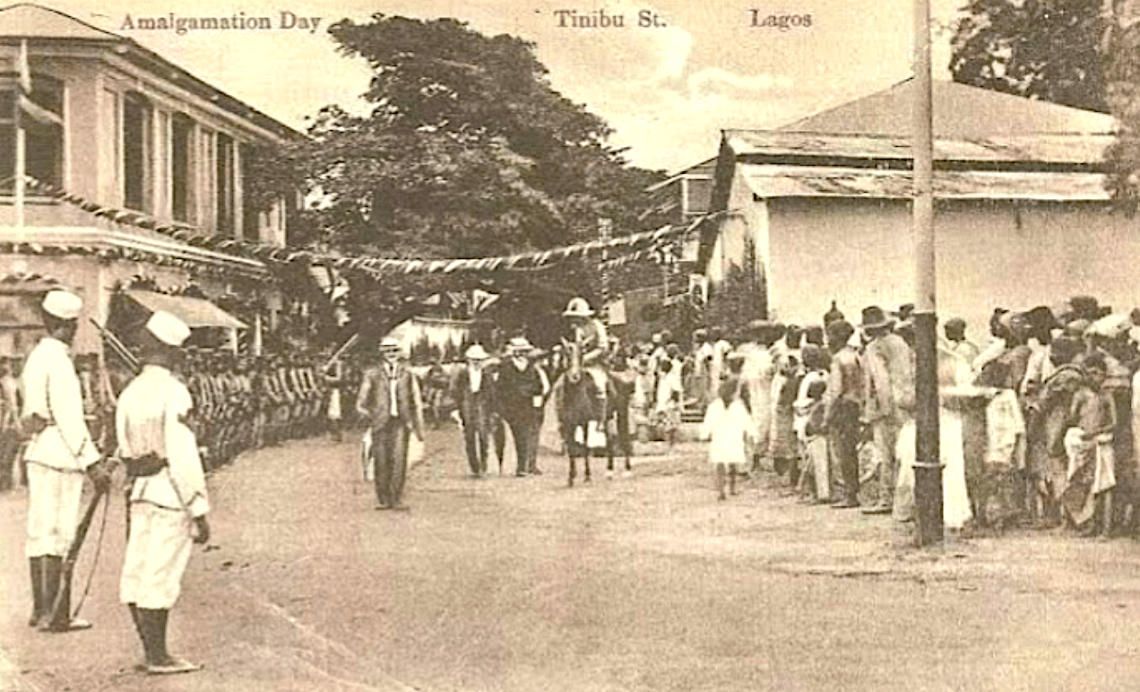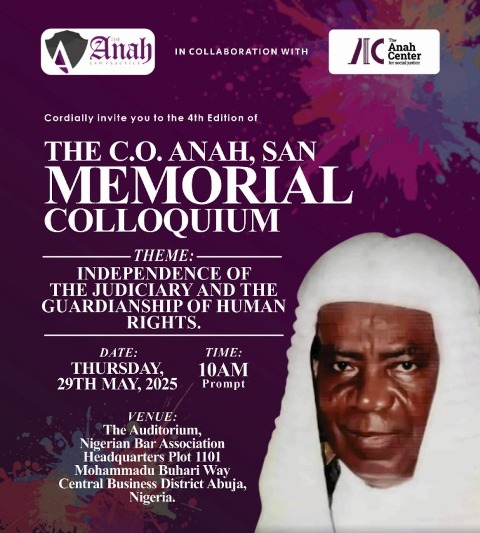I have just finished reading a book What Britain Did To Nigeria by Max Siollun, who is an authority on issues that affects Nigeria. Mr Siollun has written several books on the country, including Soldiers of Fortune: Nigeria Politics from Buhari to Babangida and Nigeria’s Soldiers of Fortune: The Abacha and Obasanjo Years. Expectedly his latest book, What Britain Did To Nigeria is very educative and informative. The 390-page book is published by C. Hurst & Co.(Publishers) Ltd. One of the articles in the book, which caught my serious attention is, ‘The mistake of 1914.’ This article summarises what one should know about Nigeria on the amalgamation that took place in 1914. Mr Siollun declared that, “Perhaps no question makes Nigerians disagree as much as why Britain created their country. Nigerians looking for deeper meaning for their country’s existence may be disappointed to find that there was none. Nigeria’s existence is little more than the outcome of balancing the colonial accounting books. In 1900 Britain created two countries with similar-sounding names. These were the protectorates of Northern Nigeria and Southern Nigeria. For 14 years these two countries were separately governed by different high commissioners. Lugard was Britain’s first high commissioner for Northern Nigeria and Sir Ralph Moor was his counterpart in Southern Nigeria. The two colonies had different colonial personnel, legal systems, land tenure laws, educational policies and systems of governance. Their eventual amalgamation on 1 January 1914 was not sudden. It was the culmination of a process that, as we have seen, began 16 years earlier with the recommendation of the Niger Committee. Although Lugard is credited as being the architect of Nigeria’s amalgamation, the process started long before he became Northern Nigeria’s high commissioner or the governor-general of the combined Nigeria in 1914.
‘These jolly laughing trading black men’
Some British accounts of the differences between the people in the two Nigerians mentioned (with the usual poor anthropological insight of that era) that ‘the inhabitants of Northern Nigeria are very different from the coast Negroes [Southern Nigeria]’ and flippantly described Northerners as ‘black-faced Mohammedan Arabs with an admixture of negro strain’ and Southerners as ‘these jolly laughing trading black men’. Although this is a very simplistic summary, others offered a more realistic assessment. Sir George Goldie, who advocated the amalgamation of Southern Nigeria and Northern Nigeria, admitted that the two countries were ‘as widely separated government, customs, and general ideas about life, both world and the next, as England is from China’. Since Britain was aware of the sharp differences between the two Nigerias, why it decide to amalgamate them anyway?
Just as British entry into Nigeria was motivated by economic reasons, so was its amalgamation into one country. The duplication of finances and personnel in running two separate colonies in the same area was an impediment to administrative efficiency. The need for British colonies to be self-financing made amalgamation a priority. Since Northern Nigeria had no coastline and was landlocked, it did not receive customs duties, as Southern Nigeria did. This disadvantage was exacerbated because Northern Nigeria imported goods from Southern Nigeria, duty-free, and its costs for transporting its goods to Southern Nigeria for export were also high. Since Southern Nigeria received customs duties and Northern Nigeria did not, a small percentage of customs revenue from the former was sent to the latter. Yet this was not enough to offset Britain’s cost of administering Northern Nigeria. The area (Northern Nigeria) had been running on a budget deficit for ten years, during which time its revenue was not enough to meet even half its cost of administration. As a result, the British Treasury paid grants-in-aid to Northern Nigeria (totalling over £4 million) in the 14 years of its existence. These were non-refundable payments, rather than loans, and were in addition to the £865,000 that the Treasury paid to the Royal Niger Company as compensation for the revocation of its charter. Such dependency on the Treasury could not continue. Lugard tried to raise revenue by imposing taxation on Northern Nigeria but it was not enough. As early as 1904, he argued that: “Northern Nigeria is as yet largely dependent on a grant in aid… I feel myself that economy can only be effected by the realisation of Mr Chamberlain’s original scheme of amalgamating Northern and Southern Nigeria and Lagos into one single administration. It is only in this way that Northern Nigeria, which is the hinterland of the other two, can be properly developed, and economies introduced into the triple machinery which at present exists. The country, which is all one and indivisible, can thus be developed on identical lines, with a common trend of policy in all essential matters.”
‘The material prosperity had been extraordinary’
Lugard’s advocacy of amalgamation, ten years before it actually happened, was not surprising. As Northern Nigeria’s High Commissioner, he faced the problems of the colony’s dependency on grants from the Treasury and the need to find alternative revenue sources. Amalgamating the two Nigerias into one country would not only solve these problems for him, but carried with it a potential promotion, in that he would become the governor of the newly amalgamated country. For Lugard, the solution to his problems lay in Southern Nigeria. He observed: “Southern Nigeria, on the other hand, presented a picture which was in almost all points the exact converse of that in the north. Here the material prosperity had been extraordinary. The revenue had almost doubled itself in a period of five years. The surplus balance exceeded a million and a half. The trade of the interior had greatly developed by the construction of a splendid system of roads, and by the opening to navigation of waterways hitherto choked with vegetation… And so while Northern Nigeria was devoting itself building up a system of Native Administration and laboriously raising a revenue by direct taxation, Southern Nigeria had found itself engrossed in material development.
Before southern Nigerians pounce with glee (as they often do) about this evidence of northern economic dependency on the south, one must pause and reflect that amalgamation was a British decision, not a northern one. Northern Nigeria had no more say in amalgamation than Southern Nigeria did (and probably, if given a choice, would have objected to it). One of the north’s leaders did, after all, later refer to amalgamation as ‘the mistake of 1914’.
‘Effect an alliance with a Southern lady of means’
The economic disparity between the two Nigerias made their amalgamation inevitable. In a light-hearted after-dinner speech to the Colonial Service Club in 1913, the secretary of state for the colonies, Lord Lewis Harcourt, used a metaphor to describe the impending amalgamation: “We have released Northern Nigeria from the leading strings (of the) (British) Treasury. The promising and well-conducted youth allowance ‘on his own’ and is about to effect an alliance with a Southern lady of means. I have issued the special licence and Sir Frederick will perform the ceremony… May the union be and the couple constant!
‘An enthusiastic practicing paedophile’
In 1913, Lugard named the prominent south-eastern Nigeria city, Port Harcourt after Lord Harcourt. Details of a man’s personal life should not ordinarily occupy much space in a history book about two nations. However, the continued prominence of Harcourt’s name in contemporary Nigeria justifies an exception. Harcourt ostensibly led an ordinary family life. His wife was the wealthy American heiress, Mary Burns, who was a member of the Morgan banking family dynasty and the niece of the banker John Pierpont Morgan (founder of JP Morgan Bank). However, Harcourt (or ‘Loulou’, as he was known) ‘was an enthusiastic practising paedophile’, who abused both young boys and girls.
Owing to his status, Harcourt’s paedophilia was largely unknown to the public, and knowledge of it was restricted to the elite circles in which he moved. Harcourt abused the son and daughter of his friend Viscount Esher (Reginald Brett). Esher’s teenage daughter, Dorothy, was so traumatised after Harcourt tried to sexually assault her that she avoided romantic relationships with men for most of her adult life. Harcourt’s predilection for preying on children was so well known that boys at Eton School (where he was a fellow) were warned not to be alone with him.
Harcourt also tried to sexually assault a young boy named Edward James during a party at his country estate. The boy reported the assault to his mother, who mentioned it to others.
Harcourt was found dead early the next year after taking an overdose of sedatives.
The most extraordinary aspect of Nigeria’s amalgamation was how little thought the British colonial administrators gave to its long-term consequences. The architects of both the 1914 amalgamation and the Niger Committee’s report of 1898 had no guiding vision or objective. Not only did the colonial government fail to contemplate the north-south differences, but they
paid little attention to how much British rule had amplified the pre-existing differences between the two regions. The introduction of Christian missionaries in the south had caused a revolutionary change to the region’s religious life and created a Western-educated cadre that was anxious for independence, while the north had little interest in rushing into a union with a southern region that was so radically different in religious and social ethos. British rule had also changed the north by introducing a Christian convert population into the region on the outskirts of the Muslim emirates. The British did not consider stabilising the country by dividing it into territorial units consistent with ethno-linguistic zones. In 1898, the Niger Committee had recommended dividing Southern Nigeria into eastern and western regions. Yet, for unspecified reasons, it did recommend a similar subdivision of Northern Nigeria. The colonial government belatedly carried out the Niger Committee’s recommendation when it split Southern Nigeria into the Western and Eastern Regions in 1939, yet it left Northern Nigeria intact and undivided. As a result, Northern Nigeria ended up than twice as large as the two southern regions combined. Creating a country where one region was geographically larger, and had more people, than all the other region became a constant point of contention.
The 1914 amalgamation and the fault lines between the north and south remain among the most contentious issues in modern Nigeria. More than 106 years after amalgamation, the wisdom of this step is still being debated in Nigeria, and the country continues to grapple with how to deal with the divisions between north and south and the mutual paranoia they often have about each other. The most spectacular eruptions of instability in Nigeria have emerged on a north-south basis: the military coups of 1966, the civil war of 1967-70, the annulment of the presidential election of June 12, 1993 and the ensuing political crisis it generated, and the crisis over Sharia law in the early 2000s. Each of these controversies has polarised the country along north-south lines. The civil war, which commenced after the south-east seceded, represented one of many attempts to repeal the 1914 amalgamation (the north also threatened secession in 1953 and 1966). It is perhaps unsurprising that conflict would arise in this manner. It was difficult to build patriotism and emotional loyalty to a country created by a foreign invader and inhabited by people whose prior loyalties had never extended beyond their family, village or kingdom.
The lack of British foresight regarding the enormous upheaval that amalgamation would cause is astonishing. For over twenty- five years prior to the merger, British administrators had year after year mentioned the massive cultural, political and religious differences between the north and south. Yet they insisted on amalgamation simply to fix an accounting problem. Even if amalgamation was a necessity for colonial administrative convenience, one wonders why it was not reversed or reconfigured when it became apparent that the unified Nigeria would one day become an independent self-governing country. With no overriding ideological principle behind Nigeria’s creation, it has been left to Nigeria’s post-colonial governments to find ways to rationalise the 1914 amalgamation. Nigeria’s territorial evolution has followed two opposing trends during its colonial and post-colonial eras. The colonial era was characterised by territorial amalgamation, and followed by the country’s fragmentation into smaller and smaller territorial units during the post-colonial era. Starting from 1967, post-independence Nigerian governments started unravelling Britain’s territorial consolidation by fracturing both the north and south into smaller states, which are currently 36 in number. It is to Nigeria’s credit that it has developed its own home-grown innovations to reduce tension between the north and south, such as an affirmative action quota system and the alternation of the presidency between northern and southern holders.
Perhaps it is pious to expect a colonial government to have contemplated the long-term consequences of its decisions on the people of the colony. As demonstrated again and again in prior chapters, the colonial government’s priority was not to create a new nation with a common ethos. The priority of Colonial Office officials was to minimize the financial burden to the British taxpayer, reduce bureaucratic duplication and maximise revenue. In that regard it succeeded from British perspective. In that regard it succeeded from Britain’s perspective. Nigeria was just a page in a colonial accounting ledger”.





